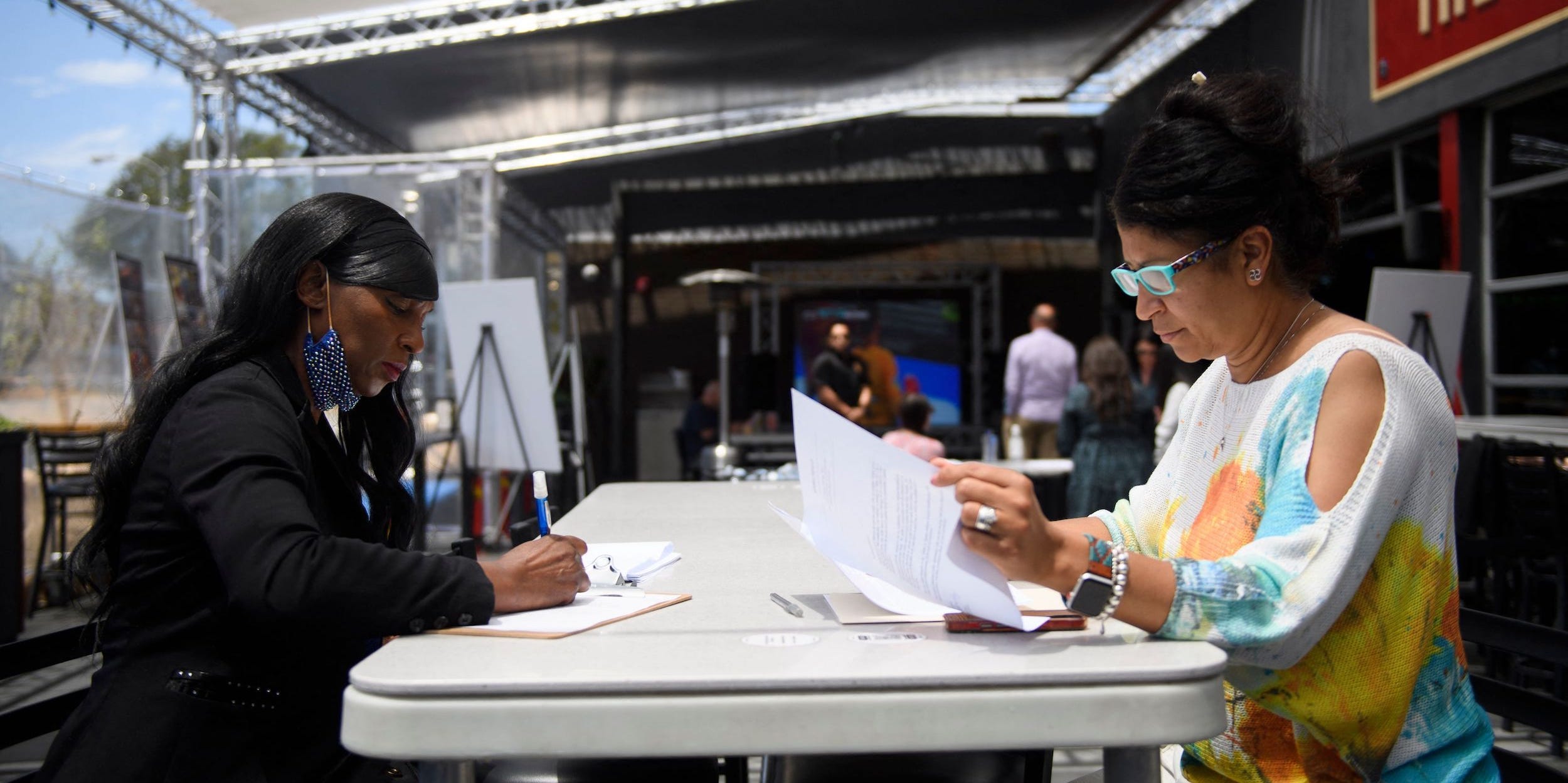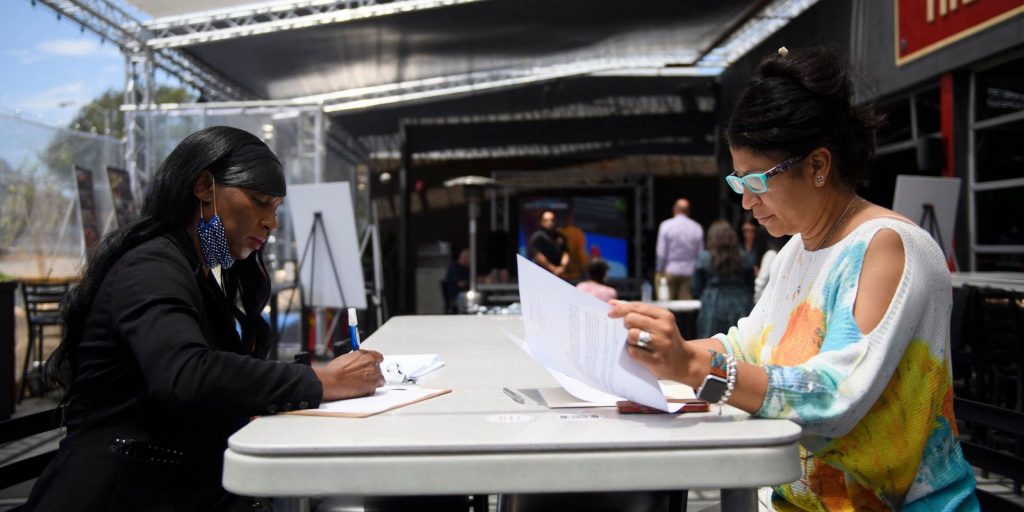
Patrick T. Fallon/AFP/Getty Images
- US job openings edged lower to 10.4 million in September, according to Friday JOLTS data.
- The print landed above the median forecast for 10.3 million openings.
- Job openings continued to exceed unemployed workers, signaling the labor shortage raged into the fall.
The number of open jobs in the US fell again in September, but numbers are still high and people are still quitting at record rates, signaling the labor shortage charged on into the fall.
US openings fell to 10.4 million from 10.6 million in September, according to Job Openings and Labor Turnover Survey, or JOLTS, data published Friday. That came in above the median estimate of 10.3 million openings from economists surveyed by Bloomberg.
The data reveals the labor shortage lingered as the Delta wave hammered hiring plans. Job growth slumped in September amid soaring virus cases and weakened confidence in the recovery. The JOLTS report shows that, though hiring slowed, the labor market still took a turn toward normalcy.
Despite the decline, openings remain at elevated levels. JOLTS data has been increasingly relevant to the recovery as businesses struggle to attract workers. The labor shortage led openings to surge in the spring and summer. Companies quickly raised wages to fill openings, but the still-elevated openings count in September signals the shortage raged into the fall.
Data out last Friday hinted the pileup of openings could shrink faster through the end of the year. The US added 531,000 payrolls in October, beating economist forecasts and showing a strong rebound from September job gains. The October jobs report was the first to reflect the Delta wave's decline, and companies' seasonal hiring plans suggest hiring will accelerate further into 2022.
The jobs data also showed hiring faring better during the virus resurgence than initially expected. The disappointing August gain was revised to 483,000 payrolls from an initial print of 235,000 jobs. September's increase was also lifted to 312,000 new jobs from a preliminary reading of 194,000. The Delta wave still curbed hiring, but the slowdown isn't nearly as bad as first thought.
Labor demand remained historically strong through September, according to the JOLTS report. The ratio of available workers to job openings fell to a record-low 0.7 that month. Readings below 1 mean there are more openings than workers to fill them. Abundant openings are typically seen late in economic cycles, but the unusually high number of unfilled openings has dragged the ratio below zero far earlier than usual.
Quits soared to a fresh record through September. Roughly 4.4 million Americans quit their jobs that month, up from 4.3 million in August. Though the reading initially seems concerning, high quits hint at a healthy labor market. Americans tend to quit when they're confident in their ability to find work elsewhere. With so many people leveraging worker demand for higher pay or better conditions, the still-high quits signal the labor market will come back stronger than before.
Where jobs are appearing as the Delta wave fades
JOLTS data is already somewhat dated by the time it comes out. The report lags the government's jobs data by an entire month. September saw the peak of the Delta wave, meaning the openings data doesn't include the effects of tumbling case counts in October.
Still, the report details exactly where openings emerged as Delta cases crested. Openings rose the most in the health care and social assistance sector, with businesses adding 141,000 new positions. State and local governments added 114,000 openings, and wholesale trade businesses created 51,000 postings.
State and local government education saw the biggest drop in openings of 114,000 positions. The decline was likely tied to the start of the school year and seasonal hiring trends. Real estate and rental firms shed 65,000 openings. Educational services businesses followed with a decline of 45,000 job listings.
Quitting increased the most in the arts, entertainment, and recreation sector as related businesses saw 56,000 workers walk out. State and local government education saw quits climb by 30,000, according to the report.
The September JOLTS data suggests the labor shortage eased further as the Delta wave began to subside. Openings are now steadily on the decline, and last week's jobs report hints openings fell even more through October. There's a long way to go before the shortage abates, but the labor market seems to finally be matching workers with employers.
